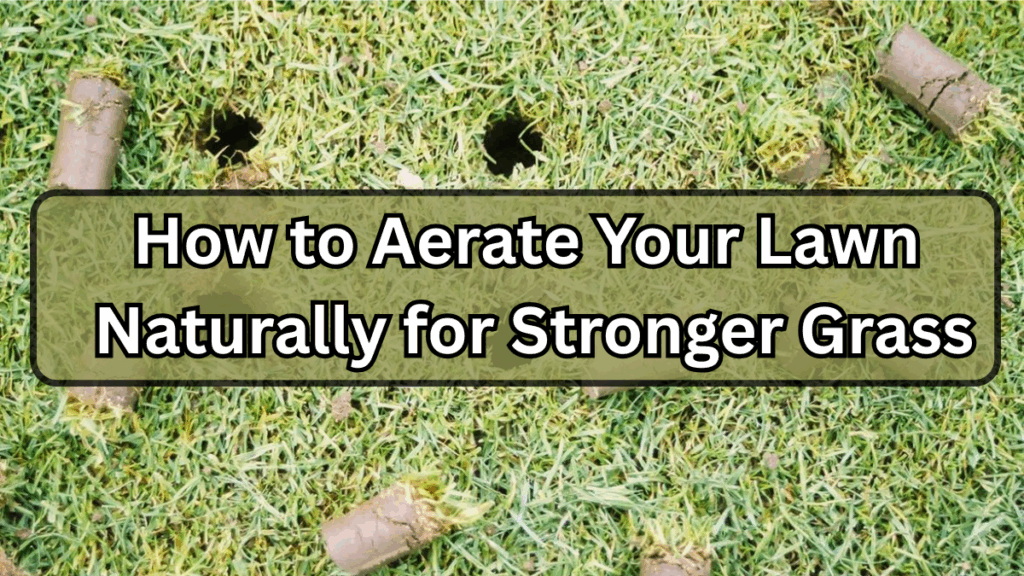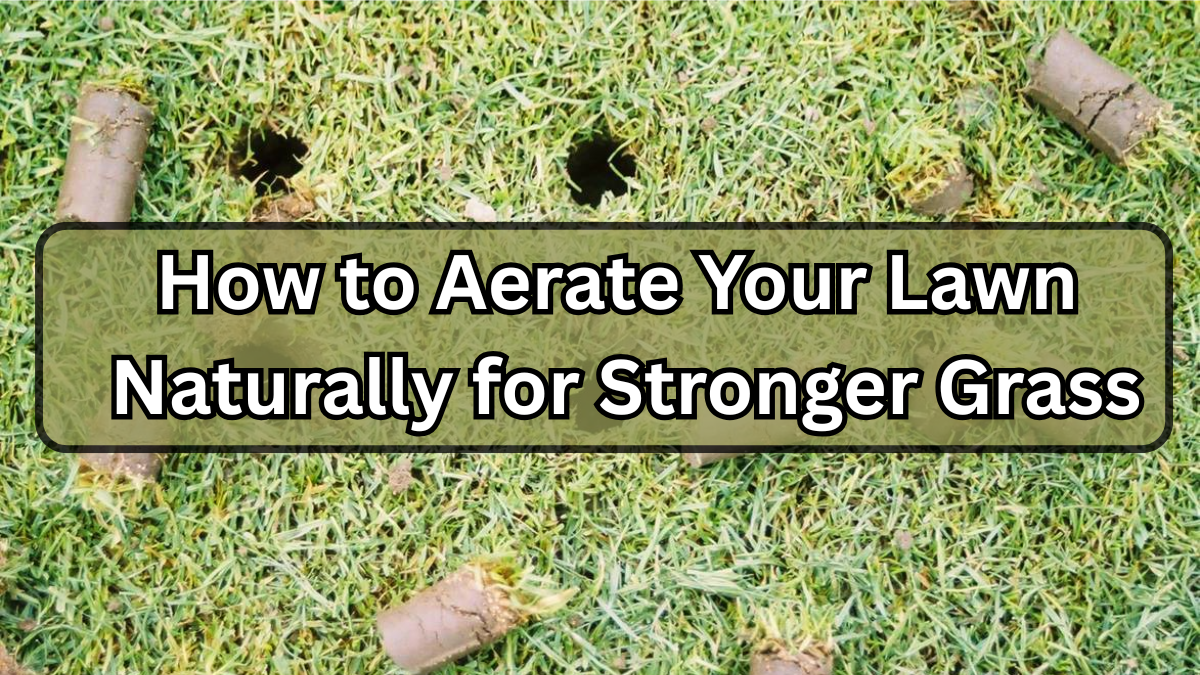A healthy, vibrant lawn doesn’t just happen on its own—it requires care, attention, and the right techniques. One of the best ways to boost grass health without relying on heavy chemicals is through lawn aeration. When done naturally, aeration improves soil structure, helps roots grow deeper, and ensures your lawn stays lush year-round.
Let’s explore simple and natural ways to aerate your lawn and why it’s essential for long-term natural lawn care.

Why Aeration Matters for Grass Health
Over time, soil becomes compacted, making it difficult for water, air, and nutrients to reach the grassroots. This leads to weak, patchy, or thinning grass. Aerating your lawn solves this problem by creating small openings in the soil, giving roots the breathing space they need.
Benefits of Lawn Aeration:
-
Stronger and deeper root growth
-
Better absorption of water and nutrients
-
Reduced soil compaction
-
Improved drought resistance
-
Healthier, greener lawn
Natural Ways to Aerate Your Lawn
You don’t need machines or harsh chemicals to keep your lawn thriving. Here are natural methods you can try:
Manual Aeration with a Garden Fork
-
Push a garden fork into the soil about 2–3 inches deep
-
Wiggle it slightly to create air channels
-
Best for small to medium-sized lawns
Lawn Shoes with Spikes
-
Strap on aerator shoes with spikes
-
Walk across your yard while doing chores or watering
-
A convenient, low-effort option for regular aeration
Use Natural Soil Amendments
-
Mix compost, sand, or organic matter into the lawn
-
These natural materials break up compact soil over time
-
Boosts both aeration and grass health
Encourage Earthworms
-
Earthworms naturally aerate the soil as they move through it
-
Add compost or mulch to attract them
-
A chemical-free way to maintain long-term natural lawn care
Best Time to Aerate Your Lawn
The right timing makes a big difference in results.
| Grass Type | Best Time to Aerate |
|---|---|
| Cool-season grasses (fescue, rye, bluegrass) | Early spring or early fall |
| Warm-season grasses (Bermuda, Zoysia, St. Augustine) | Late spring through summer |
Aerate when your grass is actively growing—this allows it to recover quickly and fill in any holes.
Tips for Successful Lawn Aeration
-
Water the lawn lightly a day before aeration to soften soil
-
Avoid aerating during drought or extreme heat
-
Apply compost or organic fertilizer afterward to maximize benefits
-
Aerate once or twice a year depending on soil compaction
FAQs About Lawn Aeration
1. How often should I aerate my lawn?
Most lawns benefit from aeration once a year, but if your soil is heavily compacted, twice a year may be ideal.
2. Can I aerate my lawn without special equipment?
Yes! Using a garden fork, spiked shoes, or even relying on earthworms are simple natural lawn care methods.
3. Should I fertilize after lawn aeration?
Yes. Aeration opens pathways in the soil, making it the perfect time to add compost or organic fertilizer for better grass health.
4. Is aeration safe for all types of lawns?
Absolutely. Both cool-season and warm-season grasses benefit, as long as you aerate at the right time for your grass type.
Final Thoughts
Natural lawn aeration is one of the easiest yet most powerful ways to promote a healthy, thriving lawn. By using simple tools, soil amendments, and eco-friendly techniques, you can improve grass health while practicing sustainable natural lawn care. Over time, these small steps lead to a lush, green yard you’ll love spending time in.
Click here to learn more
